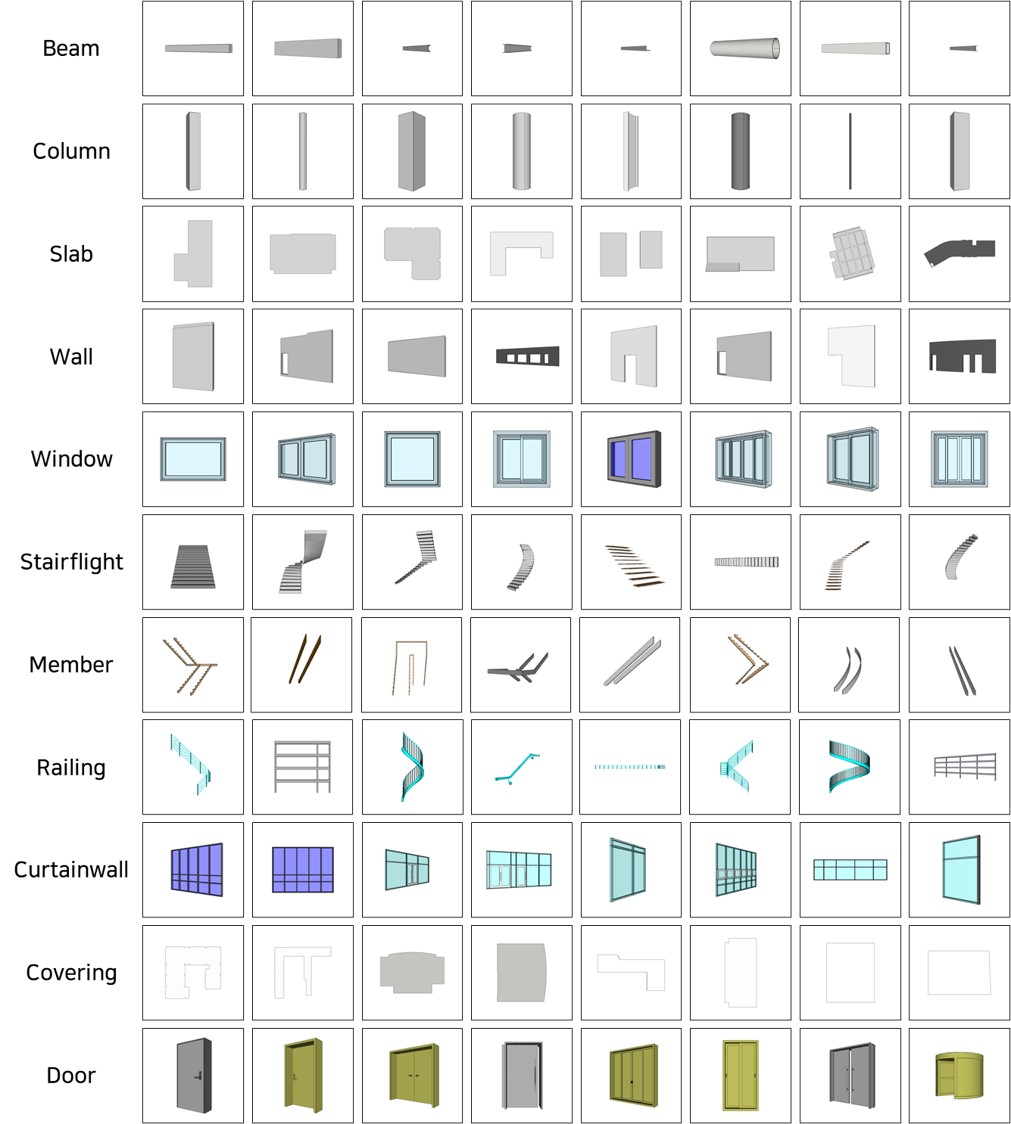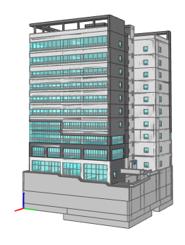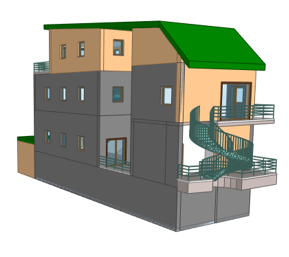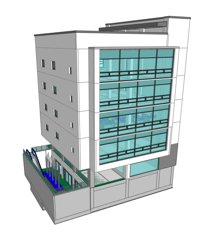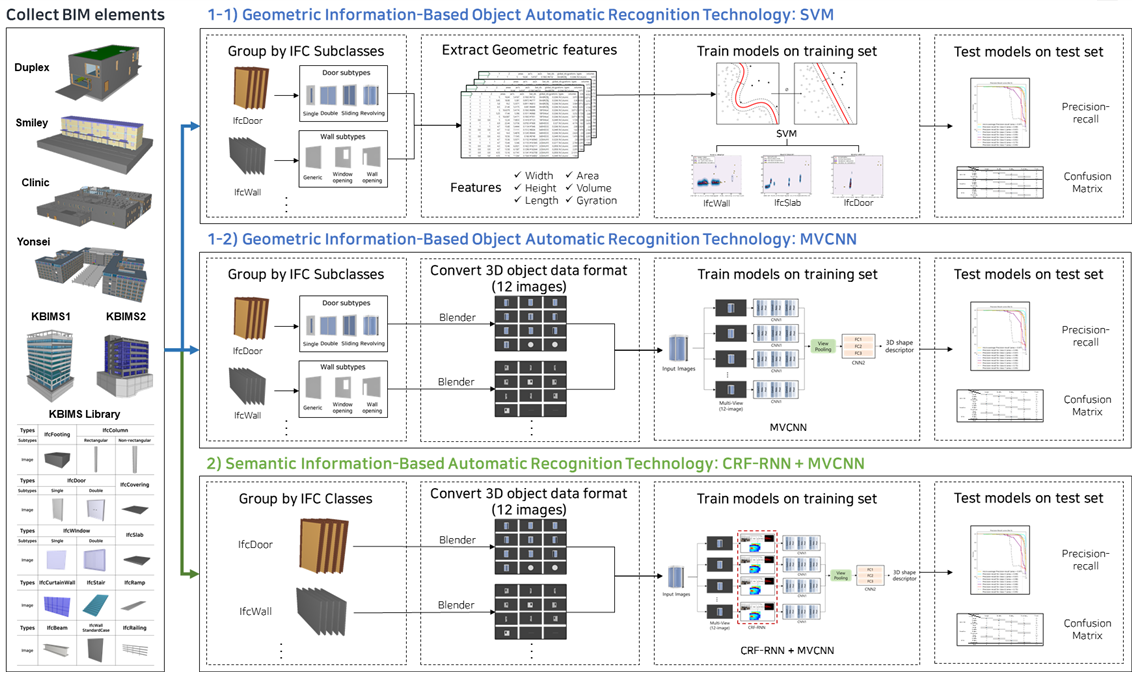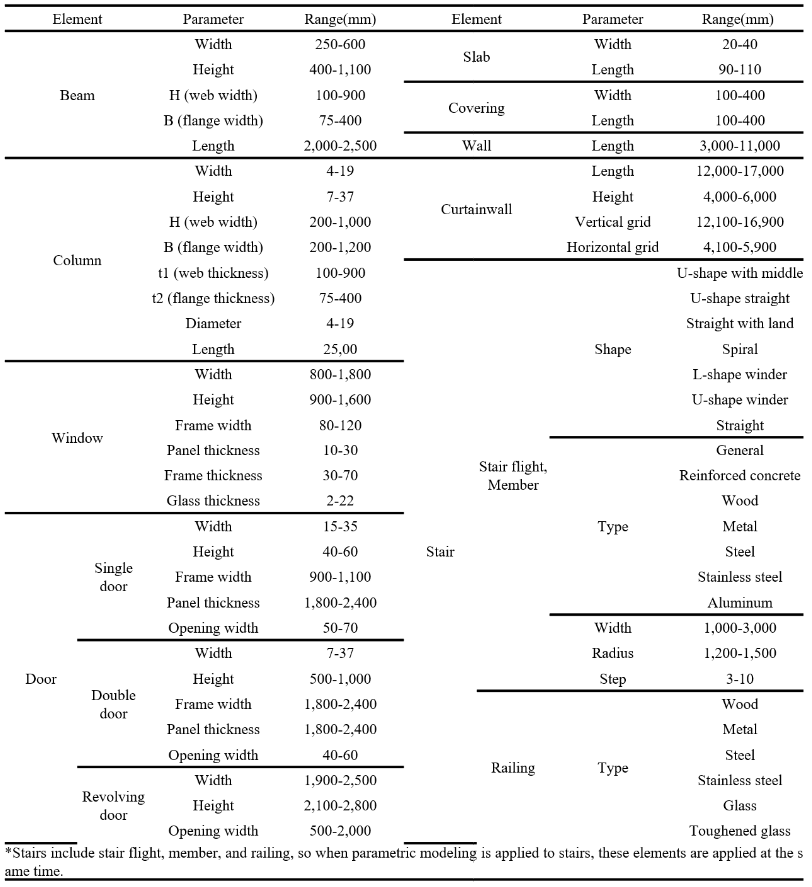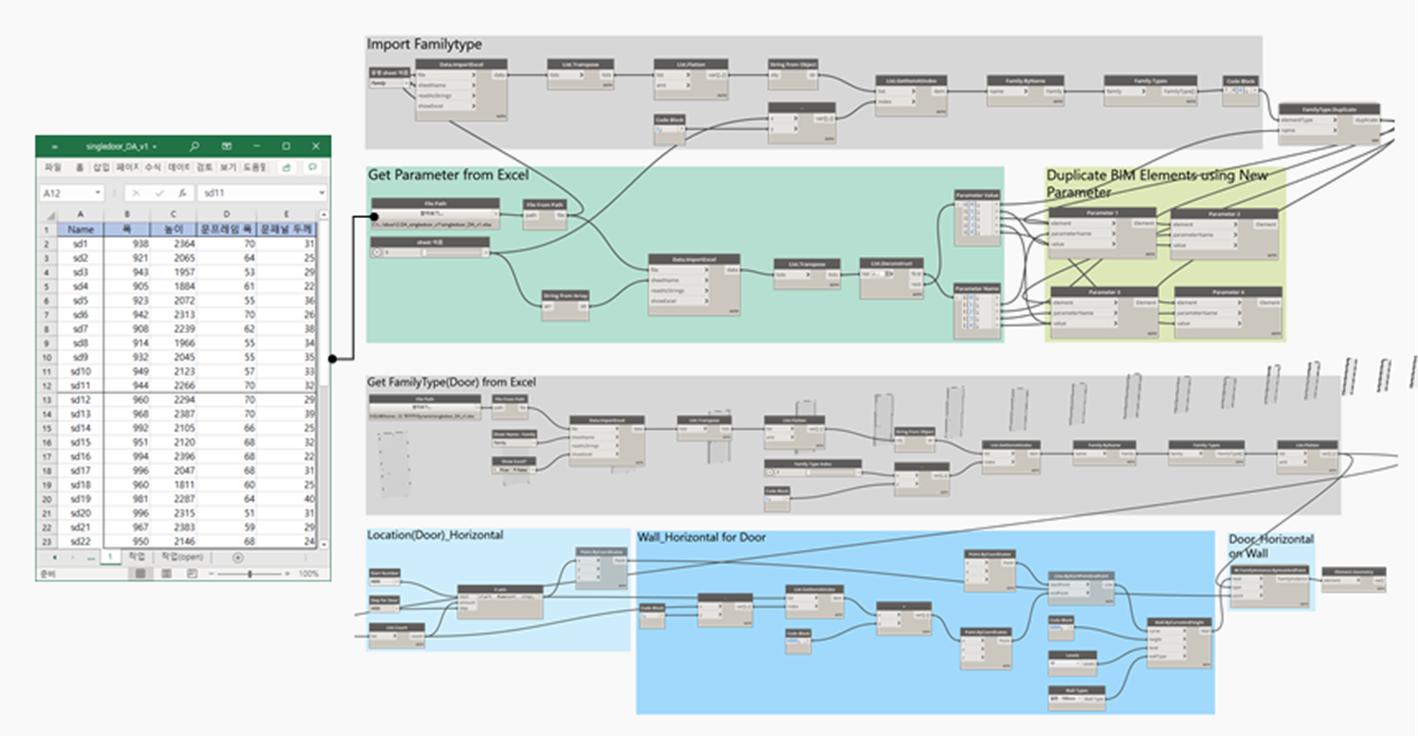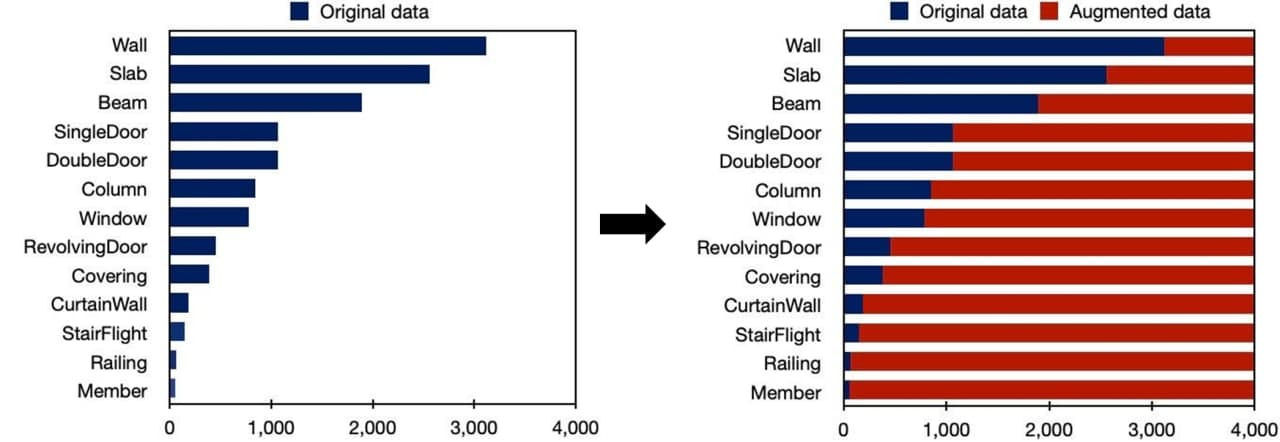|
A critical aspect of BIM is the
capability to embody semantic information about its element constituents. To be interoperable, such information needs to conform to the Industry Foundation Classes (IFC) standards and protocols. Working under the IFC
protocol requires BIM elements, relationships, and their properties to be represented in conformance to its standards. However, due to the lack of logical rigidity of the IFC schema, IFC model instances are prone to
misrepresentations and misinterpretations, resulting in a lack of semantic integrity.
Artificial
intelligence approaches have been explored as a way to verify the semantic integrity of BIM to IFC mappings by learning the geometric features of individual BIM elements. Specifically, the i3 lab research team explored the
use of different machine learning and deep learning models to determine their applicability (Koo et al., 2019; Koo et al., 2021; Koo et al., 2021). Mainly, we
trained learning models based on the geometric features of individual BIM elements. We attained the most promising results from incorporating Multi-View CNN (MVCNN), a geometric deep learning model that learns from multiple
panoramic images of a 3D artifact to learn and distinguish its shape (Su et al., 2015).
|


